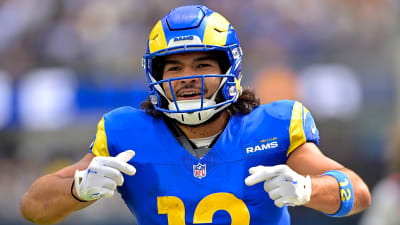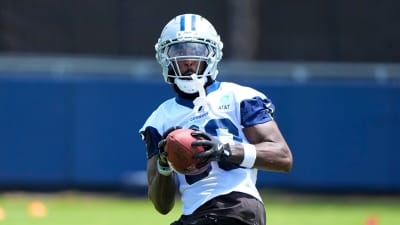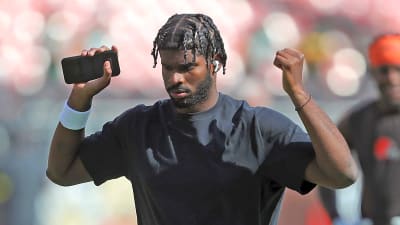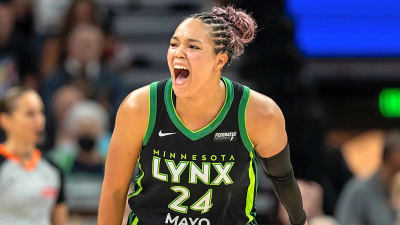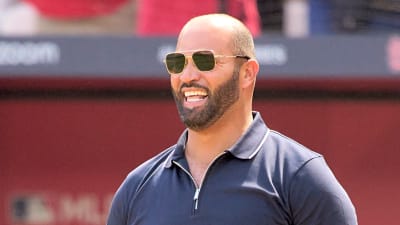
The NBA trade deadline is just two weeks away, and there's been no shortage of speculation regarding what plans the Minnesota Timberwolves may or may not have in the coming weeks. There are mock trades being churned out by the day.
If nothing else, the mock trades are a good exercise in what the Wolves can and cannot do under the second apron of the luxury tax, which subjects them to severe restrictions under the NBA's new Collective Bargaining Agreement (CBA).
Let's take a look at how that could come into play based on a few recent mock trades:
Bleacher Report mega deal
Bleacher Report consistently produces interesting trade ideas, including many that involve the Wolves. Most recently on Wednesday, they threw out a three-team deal involving Minnesota, the Chicago Bulls and the Golden State Warriors.
In this fake deal, the Wolves would acquire Lonzo Ball and Julian Phillips from the Bulls and Buddy Hield from the Warriors while gaining a $2.9 million trade exception — one they wouldn't be able to use until they're under the second apron — from trading Julius Randle. The Bulls would acquire Randle and Luka Garza from the Wolves, and Jonathan Kuminga, Kevon Looney, Kyle Anderson and Gary Payton II from the Warriors and gain $20 million and $2.8 million trade exceptions, respectively, for trading Nikola Vucevic and Torrey Craig, who land with the Warriors along with Patrick Williams and Talen Horton-Tucker. The Warriors would also gain a $9.1 million trade exception for moving Payton. Just a few players involved.
Fanspo's trade machine grades the trade as a success.
From our understanding of the new CBA, this deal would actually work. The Wolves are unable to aggregate salaries in a trade, but even though they're trading multiple players, they aren't aggregating in this case as the cap hits from Ball ($21.4 million), Hield ($8.8 million) and Phillips ($1.9 million) combined are less than Randle's $33.1 million cap number for 2024. The Wolves cannot take on additional salary, and they don't in this case, instead shedding about $4.1 million in salary.
Another three-team swap from ESPN
This proposal from ESPN is also graded as a success from Fanspo's trade machine, though it really tests the boundaries of what's possible under the second apron. It's another three-team deal involving the Wolves, the Bulls and the Utah Jazz.
In this scenario, the Wolves get Coby White from the Bulls and John Collins from the Jazz. The Bulls get Jordan Clarkson from the Jazz and Randle from the Wolves. The Jazz get Jaden McDaniels from the Wolves, and Lonzo Ball and Chris Duarte from the Bulls. The Wolves would shed over $17 million in salary, which would get them under the second apron.
That's the critical element in making this trade work based on our understanding of the CBA, which states the restrictions only come into play if a team is above the applicable apron level immediately following the transaction.
In this trade proposal, the Wolves would be aggregating salary, which they aren't allowed to do under the second apron. While White ($12 million) is nowhere near Randle's cap number, Collins ($26.6 million) has a greater cap number than McDaniels ($23). The trade only works by aggregating the salaries of Randle and McDaniels. In this case, they would be able to pull off the trade only because they'd be under the second apron immediately following the transaction.
Apron restrictions
Here's a look at all the restrictions the Wolves face under both aprons:
- Can't use biannual exception (first apron)
- Can't use non-taxpayer mid-level exception (first apron)
- Can't use expanded traded player exception (first apron)
- Can't use transition traded player exception (first apron)
- Can't aggregate salaries in a trade (second apron)
- Can't send cash in a trade (second apron)
- Can't use taxpayer mid-level exception (second apron)
Can the Wolves include multiple players in a trade? Yes, but teams over the second apron can't combine the salaries of multiple players to match the salary of an incoming player.
For example, they can't trade two players make $10 million each for a player making $20 million. However, they can trade two players making $10 million each for two players who also make $10 million each or less. From our understanding, they cannot trade two players making $10 million each for two players who make $12 million and $8 million, respectively.
More must-reads:
- Lakers' major starting lineup decision could backfire
- Savvy Quentin Grimes deal comes at the perfect time for 76ers
- The 'MLB playoffs all-time hit leaders' quiz
Breaking News
Trending News
Customize Your Newsletter
 +
+
Get the latest news and rumors, customized to your favorite sports and teams. Emailed daily. Always free!
